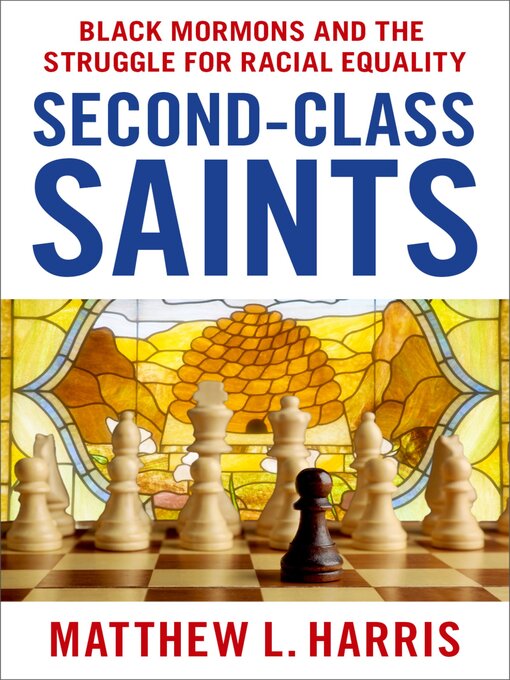-
Creators
-
Publisher
-
Release date
June 3, 2024 -
Formats
-
Kindle Book
-
OverDrive Read
- ISBN: 9780197695739
-
EPUB ebook
- ISBN: 9780197695739
- File size: 12070 KB
-
-
Languages
- English
-
Reviews
-
Publisher's Weekly
April 29, 2024
Historian Harris (Watchman on the Tower) provides a fine-grained chronicle of the deliberations and pressures that led the Church of Jesus Christ of Latter-day Saints in 1978 to repeal its ban on the ordination of Black men and the presence of Black couples in Mormon temples. Focusing on the period between 1949, when the prohibition was canonized (it had been church policy since 1852) and the ban’s repeal, Harris maps out the clashes between radical church leaders who preached that Black people were the “cursed” descendents of Cain, and the ban’s opponents, including Black Mormons, civil rights activists, and LDS administrators eager to salvage the church’s public image. Secular pressures mounted in the 1960s as a federal civil rights investigation looked into Brigham Young University’s racist admissions policies, though Harris contends that such initiatives only caused LDS leaders to retrench. Ultimately, the church’s hand was forced when president Spencer Kimball pushed to open temples in racially diverse countries like Brazil, culminating in his 1978 “revelation” that the time had come to “admit Black people into ranks as full, functioning members.” Harris studiously dissects how the church’s legacy of racism has persisted after the ban’s repeal, noting that leaders have recently sought to “distance the church from antiblack teachings” without directly repudiating them. It’s a nuanced account of the Mormon church’s uneven progress toward social justice.
-
Formats
- Kindle Book
- OverDrive Read
- EPUB ebook
Languages
- English
Loading
Why is availability limited?
×Availability can change throughout the month based on the library's budget. You can still place a hold on the title, and your hold will be automatically filled as soon as the title is available again.
The Kindle Book format for this title is not supported on:
×Read-along ebook
×The OverDrive Read format of this ebook has professional narration that plays while you read in your browser. Learn more here.

